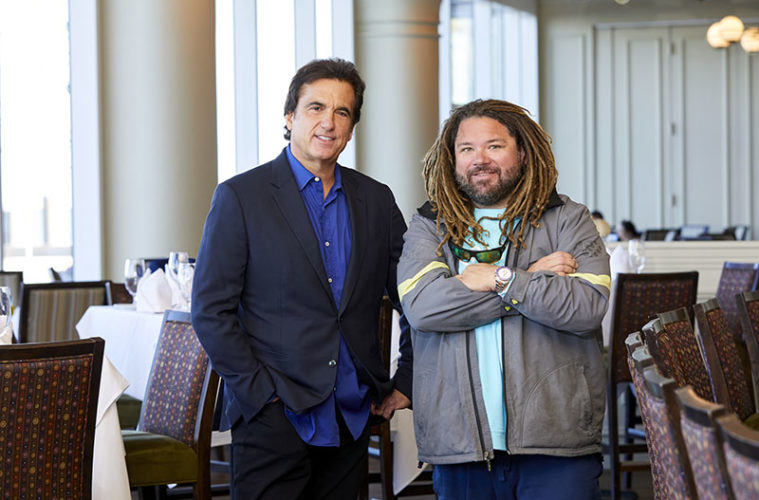T.J. Ott describes himself as a Davio’s fanboy. If you’ve tuned into Wicked Tuna, the longstanding show on the National Geographic Channel, the nomenclature might surprise you. You might find it hard to believe, say, that Captain T.J. Ott, owner of Rottweilers, donner of dreadlocks, would define himself as a fanboy of anything, least of all a 37-year-old collection of upscale, ingredient-forward Northern Italian restaurants.
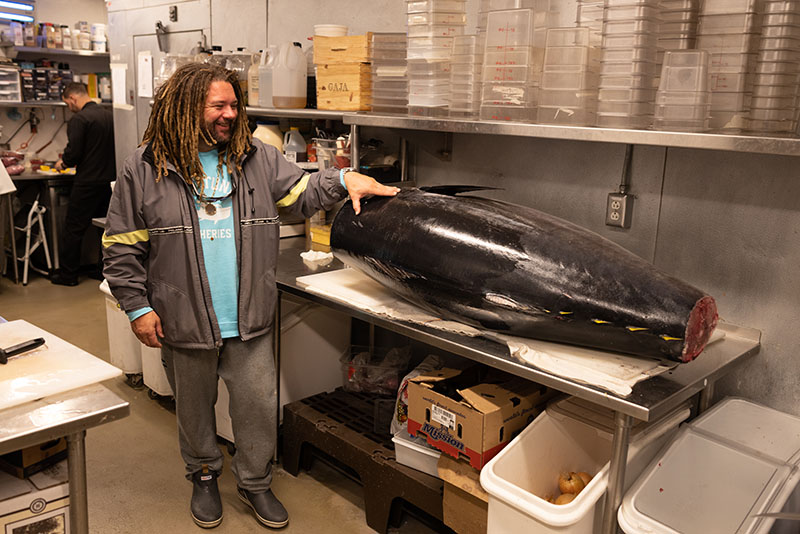
Photograph by PFTV
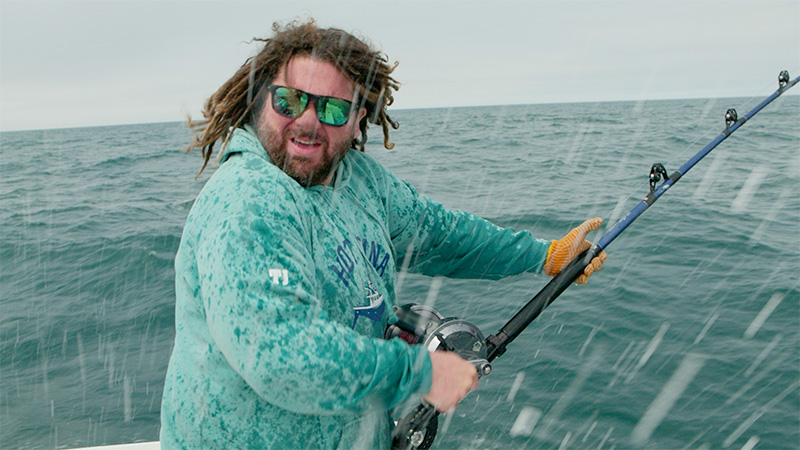
But Ott, who helms the fishing vessel known as Hot Tuna, is a man of many layers. He is, yes, the television personality with 153,000 Instagram followers and a laid-back fishing ethos (in the fishing off-season, he decamps to Key West, home of pastels and a barefoot lifestyle). He is also a Davio’s regular. “I’m going to go there for lunch in about an hour, and I’ll know every person in there eating lunch,” he says on a Zoom call, and there’s no waffling in his voice: He’s as serious as a Gloucester winter.
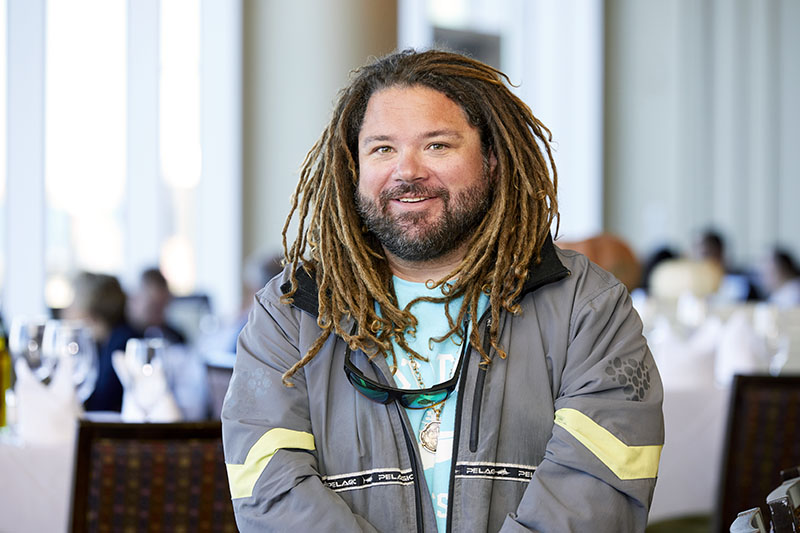
Wicked Tuna, which originally aired in 2012, has traced both the lives of American tuna fishermen (including Ott) and of the bluefin tuna, an imperiled species that has been overfished due to poor practices and a lack of regulation. The sleek, silver, torpedo-shaped beauty, which runs in Atlantic waters from the Gulf of Mexico all the way up to Canada, can reach about 500 pounds.
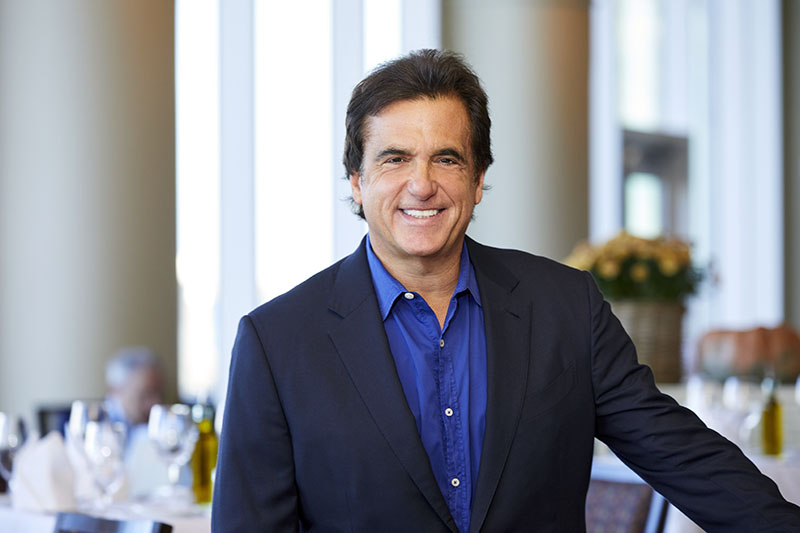
But bluefin is making a comeback, due, in large part, to regulatory changes, and to changes in fishing practices (fishing by line instead of by net, for instance, which avoids bycatch). “The tuna fishery is better than it was 30 years ago,” Ott says. “We’re meeting our quotas so much quicker than we did 20 years ago, because of what we we’ve done as far as the rules and sustainability. People can sit down at night and eat this fish at one of these restaurants and know that this fish is coming from a very, very protected and well-run fishery.”
The bluefin fishing season opens on June 1, Ott says, and runs through November or December. “Each month has individual sub-quotas, which means that the government puts quotas in place monthly, where, once that quota is met, you can’t fish,” Ott says. Quotas like this, he says, keep the population in check and allow for existing tuna to continue to breed. There are other regulations, too: Fishermen are not allowed to fish for tuna that are too small (commercial fishermen must return to the water bluefin tuna under 73 inches).
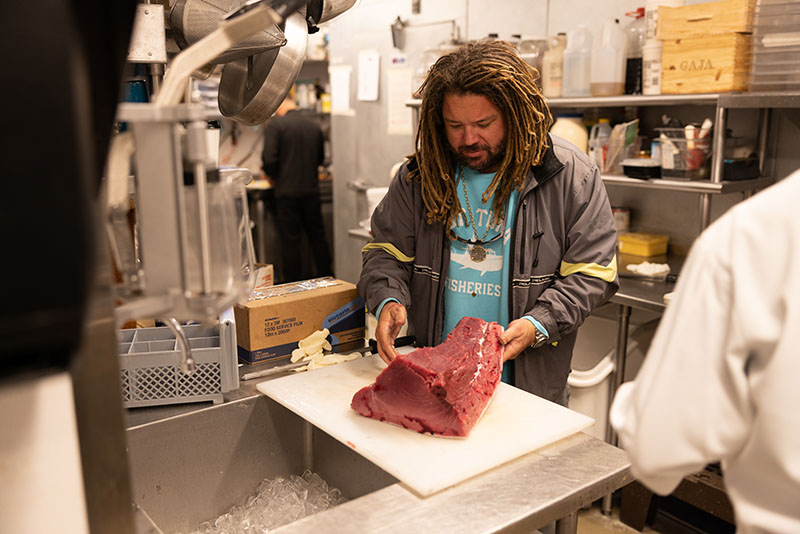
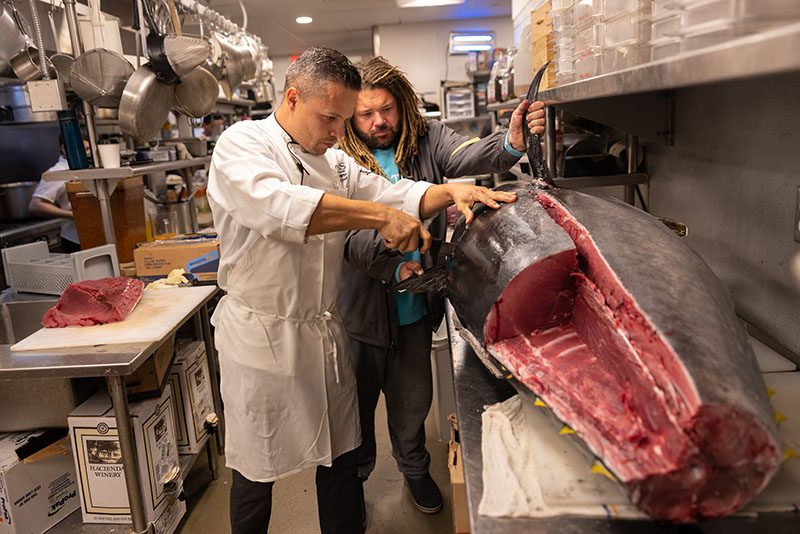
One crisp October morning, the proof of the fishery’s restored health is in the landing, so to speak. A 400-plus-pound bluefin, in all its aquatic glory, makes its way from the depths of the sea to the deck of the Hot Tuna. The 94-inch-long fish, after being dressed, Ott says, yields about 350 pounds, destined not for parts unknown, but, rather, for Ott’s favorite fanboy spot: a plate at Davio’s.
“This is a North Atlantic bluefin out of the waters of Boston that has been eating herring,” Ott says. “This time of year, the fish are very high-quality.” The fall bluefin, Ott says, are rich and fatty, sharing more in common with a well-marbled beef steak or sushi-grade otoro served at a New York City omakase restaurant than a lean piece of fish.


A T.J. Ott line-caught bluefin tuna that is landed in Gloucester on a Monday in October is on a plate at Davio’s in the Back Bay or at Lynnfield MarketStreet (or both) the next night, says Steve DiFillippo, the restaurant group’s chef-owner. “We won’t just do a tuna steak,” DiFillippo says. “We’ll scrape the tuna, and we’ll do tuna tartare with it. It’s the greatest tuna tartare.”
It was—and is—the restaurant group’s dedication to local purveyors and sustainable practices that informed Ott’s passion for Davio’s, where he’s more than just a regular—he’s a regular celebrity. “He walks through the restaurant, and everybody wants to talk to him,” DiFillippo says of Ott. “Just the other night, Governor Charlie Baker was in, and he couldn’t wait to say hi to him.”
On occasion, DiFillippo says, he asks guests if they’ve ever seen the show, and when they profess their love for it, he pulls Ott out from the shadows, like a magician unearthing his greatest trick.
“He does it all the time,” Ott says, laughing.
But Ott is keener to recall, in vivid detail, the last rich tuna collar he devoured at Davio’s. “The collar toro is some of the more sought-after toro,” he says. On a recent night at Davio’s, he ate one of his own fish, a collar seasoned with citrus and simple seasoning. Describing the delicate fish, which he had, in fact, brought up from the depths himself, Ott sounded very much like a fanboy, indeed.

